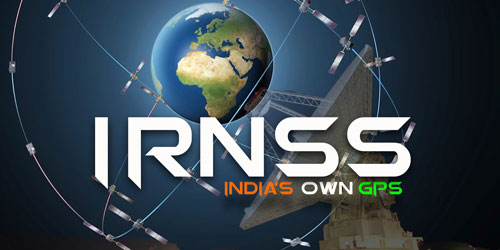PSLV – C32 Launches India’s Sixth Navigation Satellite IRNSS-IF
On Thursday, India successfully launched its Sixth navigation Satellite, 1,425 kg IRNSS – IF, into the intended orbit. ISRO,s Polar Satellite Launch Vehicle, PSLV – C32, in its thirty fourth flight, put the Satellite into precise orbit 20.2 minutes after the lift off as the Indian Space Research Organisation’s (ISRO’s) Scientist at the Mission Control Centre broke into applause. PSLV – C32 blasted off the Satellite into high altitude from the second launch pad at 4.01 PM at Satish Dhawan Space Centre SHAR, Sriharikota. This is the thirty third consecutive successful mission of PSLV.
IRNSS is an independent Indian regional navigation satellite System. It is designed to cater position information in the Indian region and 1,500 km around the Indian mainland. IRNSS would cater two kinds of services. The first service, Standard Positioning Services (SPS) is provided to all user; the second service, Restricted Services (RS) is provided only to authorized users.
A number of ground stations accountable for the generation and transmission of navigation parameters, satellite ranging and monitoring, etc, have been set up in eighteen locations across the country.
IRNSS – !G, the last satellite of this system, is going to be launched by PSLV in April 2016, thus completing the IRNSS constellation.
Must Read: Facts about Constellations
Satish Dhawan Space Centre
It is the Indian Space Research Centre’s (ISRO’s) main satellite launch centre. It was situated in Sriharikota, Andhra Pradesh, 80 km north of Chennai. It was originally called Sriharikota High Altitude Range (SHAR),an acronym that ISRO has withheld to the present day and then Sriharikota Launching Range, the centre was renamed after the death of ISRO’s former Chairman, Satish Dhawan, in 2002.
The Satish Dhawan Space Centre has, till date, 52 launches to its credit out of 52, 42 launches have been recorded as successful. It has 8 failed launches accorded to it.
The Five Previous IRNSS Satellite
IRNSS – 1 A
IRNSS- 1A, the first navigational satellite in the Indian Regional Navigation Satellite (IRNSS) series of satellites, had been developed at a cost of Rs. 1.25 billion (US $ 18 million). It was launched from the Satish Dhawan Space Centre (SDSC) on 1, July 2013 at 11:41 PM.
The launch was deferred from its initial launch date of 26 June 2013, because of a technical snag in the 2nd stage of the PSLV- C22 launch rocket.
The satellite was launched to cater services to the Indian public this system would be system similar to Global Positioning System (GPS), but only for India and the region around it.
Also Read: Polar Satellite Launch Vehicle (PSLV)
IRNSS – 1B
IRNSS – 1B, 1,432 kg. satellite, was launched on 4 April 2014 at 17:14 IST, aboard the PSLV – C24 from SDSC, Sriharikota. It was launched to help enhancing the satellite based navigation System of India which was then under development.
IRNSS – 1C
IRNSS – 1C was launched on 16 October 2014 at 01:32 AM, by PSLV – C@^ from SDSC in Sriharikota. The satellite will cater navigation, tracking and mapping services.
IRNSS -1D
IRNSS – 1D, is a satellite slate to provide navigational services, which was then under development. It was launched successfully on 28 March 2015 onboard ISRO’s PSLV – 27 from SDSC. The total cost of the mission was about Rs. 14 billion.
IRNSS – 1E
IRNSS – 1E, the fifth out of seven in the IRNSS series of satellite, was launched into orbit on January 20, 2016.
Polar Satellite launch Vehicle, in its 33rd flight (PSLV – C#!), launched the satellite from SDSC. The satellite will provide navigation, tracking and mapping services.
Don’t Miss: Space Exploration from Earth



